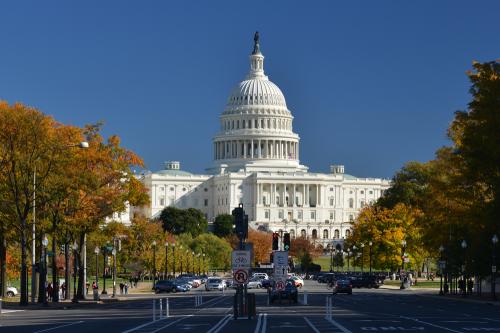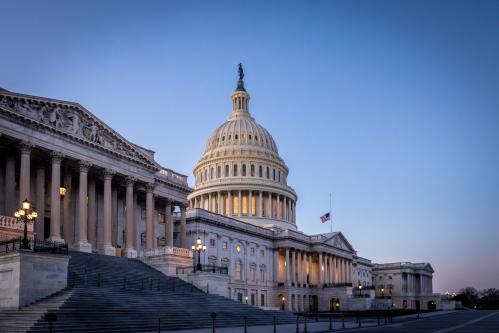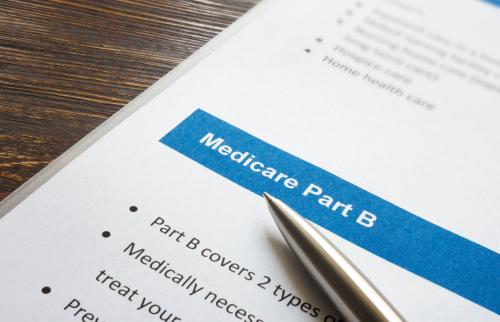The following testimony was given to the U.S. House Committee on Energy and Commerce, Subcommittee on Health on October 19, 2023. Video of the hearing is available here.
Chairman Guthrie, Ranking Member Eshoo, and members of the subcommittee, thank you for inviting me here today. My name is Matthew Fiedler, and I am a health economist and the Joseph A. Pechman Senior Fellow in Economic Studies at the Brookings Institution, where I am affiliated with the Schaeffer Initiative on Health Policy. My research examines a range of topics in health care policy, including health care provider payment and health insurance regulation. I am excited to be here today to discuss ways to improve Medicare’s physician payment system. My testimony begins by examining the tradeoffs that policymakers will face as they make decisions about the trajectory of Medicare’s physician payment rates. I make four points:
- Policy in this area must balance two important objectives: (1) ensuring Medicare beneficiaries can access high-quality physician care; and (2) limiting the costs that higher Medicare payment rates impose on taxpayers, beneficiaries, and even the privately insured.
- Data on Medicare beneficiaries’ ability to access physician care can guide policymakers as they balance these objectives. Most beneficiaries do not report major problems accessing physician care, and access to care among Medicare beneficiaries is currently comparable to—or even slightly better than—access to care among the privately insured.
- Strikingly, Medicare beneficiaries’ access to physician care has remained relatively stable over a two-decade period in which Medicare’s physician payment rates have grown more slowly than practices’ input costs. This could indicate that changes in Medicare payments currently have only modest effects on access or, alternatively, that other changes in the delivery system are offsetting the effects of lower input-cost-adjusted payment rates.
- Looking ahead, this experience suggests that there is some scope for Medicare’s payment rates to grow more slowly than input costs without eroding access. This conclusion is subject to some caveats, notably: during the next year or two, growth in input costs will likely exceed growth in payments by more than it did during a typical year in the past two decades; the delivery system could respond differently to the same payment change in the future relative to the past, especially if input costs outpace payment rates indefinitely; and outcomes other than access, like quality, might exhibit different trends.
The second half of my testimony discusses potential improvements to the structure of Medicare’s physician payment system that are worth considering regardless of the level of payments:
- Eliminate the Merit-Based Incentive Payment System (MIPS). Evidence suggests that MIPS is doing little to improve patient care even as it imposes substantial compliance costs on physician practices. Eliminating these costs by eliminating MIPS would be a low-cost way of addressing concerns about the adequacy of Medicare’s physician payments.
- Maintain bonuses for participation in advanced alternative payment models (APMs). In contrast to MIPS, well-designed APMs do appear to improve the efficiency of patient The existing payment bonus for participation in “advanced” APMs encourages uptake of these models, while also giving the Centers for Medicare and Medicaid Services (CMS) greater flexibility to improve their design. However, under current law, this bonus will fall sharply starting in 2024 before gradually recovering in future years.
- Insulate future physician payment rates from inflation shocks in a budget-neutral way. Physician payment updates are currently fixed in law, so shocks to economy-wide inflation can cause inflation-adjusted payment rates to be higher or lower than expected. This could be avoided without a substantial scored cost by specifying that payment updates should equal the Medicare Economic Index minus an appropriate fixed percentage.
- Adopt site-neutral payment for ambulatory services. At present, Medicare often pays more for ambulatory services delivered in a hospital outpatient department rather than a physician office. A shift to site-neutral payment could reduce costs without threatening patients’ access to appropriate care. Importantly, the benefits of adopting site-neutral payment will likely grow over time if Medicare’s physician payment rates continue to grow slowly in the years to come, as is scheduled to occur under current law.
-
Acknowledgements and disclosures
The Brookings Institution is financed through the support of a diverse array of foundations, corporations, governments, individuals, as well as an endowment. A list of donors can be found in our annual reports published online here. The findings, interpretations, and conclusions in this report are solely those of its author(s) and are not influenced by any donation.
The author would like to thank Paris Rich Bingham and Chloe Zilkha for assistance with fact checking this testimony.
The Brookings Institution is committed to quality, independence, and impact.
We are supported by a diverse array of funders. In line with our values and policies, each Brookings publication represents the sole views of its author(s).







Commentary
TestimonyMatthew Fiedler’s testimony before the House Committee on Energy and Commerce, Subcommittee on Health
October 19, 2023